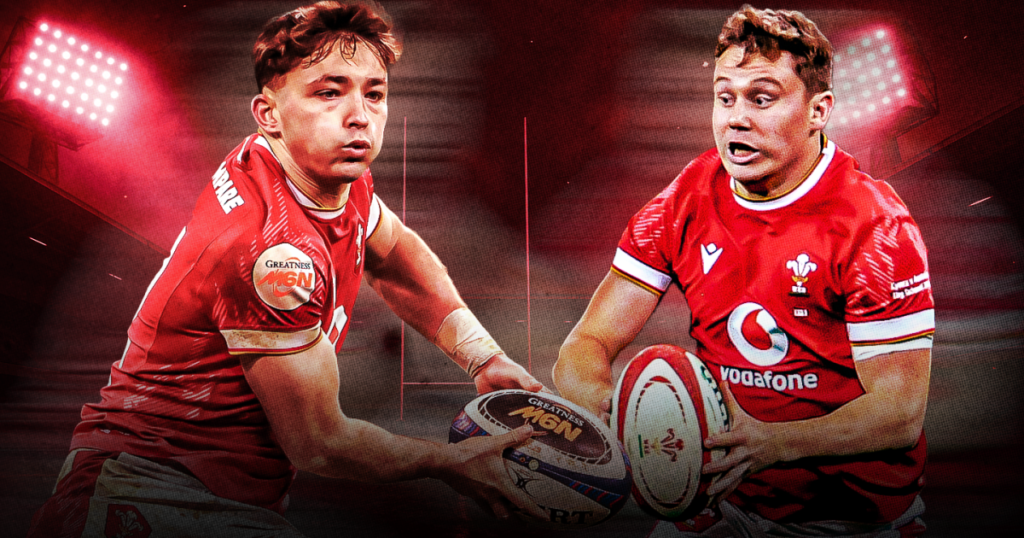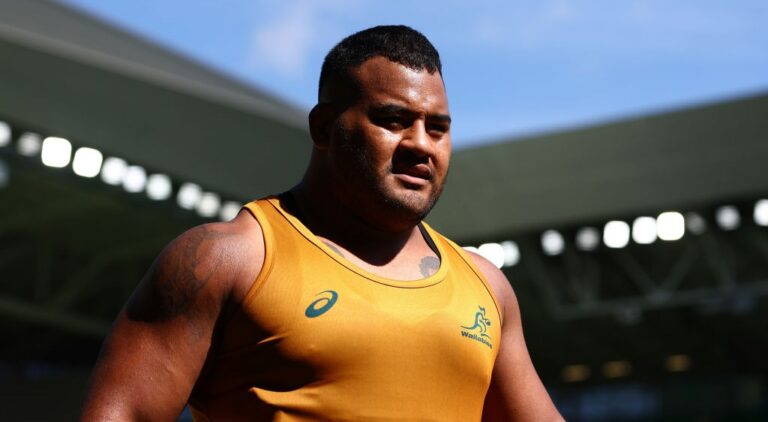
An interview with the former Wales fly-half Arwel Thomas many years after he called time on his playing career saw him herald his arrival in the reception room at Morgans Hotel in Swansea by shimmying past a couple of middle-aged gents, making sure not to nudge over what was left of their morning coffees. Without the late twitch of the hips, a video replay might have been needed to sort out responsibility for a couple of broken cups on the floor.
‘Fair play, he’s still got it,’ you thought to yourself.
Thomas went on to offer a fascinating insight into the highs and lows of playing No. 10 for Wales. A student with zero media training when he won his first cap, he had TV crews following him to college, a zillion interviews to give, autograph books to sign. “At the age of 21, I didn’t know what hit me,” he said. “Everyone has an opinion and they feel entitled to tell you, particularly if the team loses.” A gifted player who played the game with imagination, he went on to win 23 caps.

But throughout it all the scrutiny was something else, just as it has been for every player who has worn the Wales fly-half shirt. This writer recalls being in a Valleys rugby club watching a Wales team that included Jonathan Davies as he made his way in Test rugby. Was the room full of appreciation for a player who is now deservedly remembered as a great? No, it was not. Opinion was split. Some saw him as capable of producing miracles on demand, others reckoned he shouldn’t even be in the side. Those who viewed the matter in grey rather than black or white were in short supply.
Then there was Neil Jenkins. To watch him launching the ball out of the mud at Pontypridd’s Sardis Road ground in the early 1990s and through the sticks from 50 yards was to witness skill that few could hope to replicate. No matter how difficult the kick, whether from tight on the touchline or into howling wind or driving rain or both, Jenks always seemed to find a way. On certain days, you’d have backed him to send one between the posts from behind the burger van.
Jenkins was more often than not the premier scapegoat for the team’s failings, with blame coming his way whether he deserved it or not.
He could also run games and was an underrated distributor. Yet appreciation of his talents wasn’t total, with plenty prepared to air the view that he shouldn’t be in the team. Welsh packs at the time dominated half-decent opponents as often as UHT milk was served with tea at the Ritz, yet Jenkins was more often than not the premier scapegoat for the team’s failings, with blame coming his way whether he deserved it or not.
No one accused him of being responsible for the sterling crisis of 1992, or the underwhelming summers of 1993 and 1998, but pretty much everything else seemed to be pinned on him. The way some saw it, he was culpable for all Welsh rugby’s ills, from Bangor to Barry. Heavy is the head that wears the crown? For sure. Yet it was all more than a bit ridiculous.

Nonetheless, much attention will be focused on Sam Costelow and Dan Edwards in Japan this summer.
The Welsh coaches need one or both of the two youngsters to take a great leap forward on the tour, for there has been uncertainty at fly-half in Wales for too long, even under Warren Gatland. Maybe we can write ‘especially under Warren Gatland’, for the New Zealander infamously tried six different players in the No. 10 shirt in 12 months during his second coming as Welsh head coach. If that is not the very definition of rugby instability, then nothing is.
He has left Welsh shores now, but questions remain at fly-half for Wales. In choosing Costelow and Edwards as his only specialist 10s, interim coach Matt Sherratt has opted to place his faith in two youngsters who are unproven at Test level.
A sports psychologist isn’t needed to inform us being subjected to an extended run of selection hokey cokey is no way for a young player to build confidence.
Costelow does have 18 caps to his name, with nine starts, but he has played a full 80 minutes in just one of those matches, against Georgia at the World Cup, and has yet to come up with a defining performance for his country, albeit he has been playing at a time when the team as a whole has been misfiring in close on every department.
On occasions, he has appeared unsure of himself. His first Test start, against Scotland in the 2024 Six Nations, saw him launch a series of aimless kicks and struggle to ignite his backline. Was it the game-plan that confused him or was he hit by debut-day nerves? We’ll probably have to wait for his autobiography a dozen years down the line before getting a definitive answer to that one.

So it’s been as much stop as start for him with Wales. First, Ioan Lloyd took his place, then Ben Thomas replaced him on the tour to Australia last summer, then Gareth Anscombe held the reins ahead of him for the first two autumn Tests. A sports psychologist isn’t needed to inform us that being subjected to an extended run of selection hokey cokey is no way for a young player to build confidence.
But he does have promise. He has worked to improve his kicking out of hand, is brave in defence and a nice passer. As far back as 2021, former Wales international Paul Turner, who coached the Pencoed product at Ampthill and has forgotten more about fly-half play than most of us will ever know, was declaring on social media: “Costelow is the future.”
What he needs as much as anything else is a coach who will give him a run of games at Test level, the only way to find out whether a player truly has the temperament, among other things, for elite rugby.
Occasionally, Edwards’ boldness can lead to mistakes, but that can be the way for an adventurous player. The challenge is to learn without losing too much risk-taking exuberance.
Edwards? With just two appearances off the bench for Wales, he is very much an L-plater in international terms. That said, he has come a long way in a short space of time. He is quick, can hoof a ball significant distances and has an eye for a gap. When he is on the field, things tend to happen – sometimes very good things for his team. Already he has a highly watchable highlights reel that includes long-range dropped goals, one of them to pluck victory out of the fire for the Ospreys in the final seconds against Ulster, scorching tries and a touchdown assist against Cardiff that saw him flight a 20-metre pass out wide with sublime skill and bullseye accuracy.
Occasionally, his boldness can lead to mistakes, but that can be the way for an adventurous player. The challenge is to learn without losing too much risk-taking exuberance.
The unknown is whether Edwards can run a match on the biggest stage, but Wales have evidently seen enough in him to feel he could be worth developing.
Not short of belief on the field, he will travel to Japan hopeful he can do enough to convince the coaches he should be trusted with significant responsibility.

Wales also have Ben Thomas in their tour squad, but the assumption is Sherratt will consider him mainly as a centre, where he has played most of his rugby for Cardiff.
Can we say any other fly-half is unlucky to miss out? Admirers of Sam Davies would answer that one in the affirmative. This term, Davies has come up with try assists by the sackful and 251 points for his club Grenoble while also moving them around the pitch with aplomb. He may be operating in French rugby’s second tier, but there has been nothing second rate about his performances.
Former England flanker Joe Worsley, who is on the coaching staff at Brive, said recently: “Sam Davies has been killing it for a couple of years now. People in France don’t understand why he’s not involved with Wales.”
Costelow and Edwards have gilt-edged opportunities to stake their claims. It would be big for Welsh rugby if one or both of them could deliver.
Davies himself is unsure if he’s eligible for Wales under their selection rules. If he is, there’s a case for believing he should be part of the conversation moving forward, especially as pretty much every other option has been explored. However this summer turns out, Wales need to build depth at 10 and could do worse than look again at a player who has been playing some of his best rugby.
Whatever, Sherratt will know he needs his forwards to set in place a platform this summer for Costelow and Edwards to show what they can do. There can be no guarantees on that front, of course. Japan may not be renowned for their fearsome packs, but, of late, nor are Wales.
But let’s see what happens.
It is overdue for someone to make a firm statement to show there is life after Dan Biggar.
Costelow and Edwards have gilt-edged opportunities to stake their claims.
It would be big for Welsh rugby if one or both of them could deliver.





